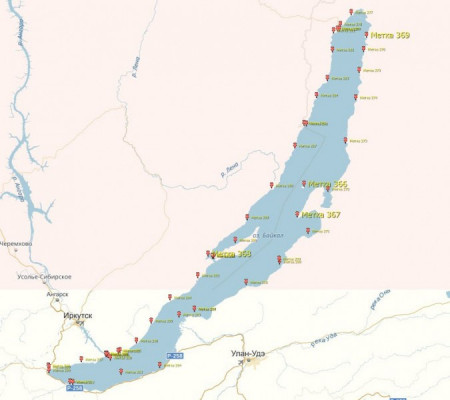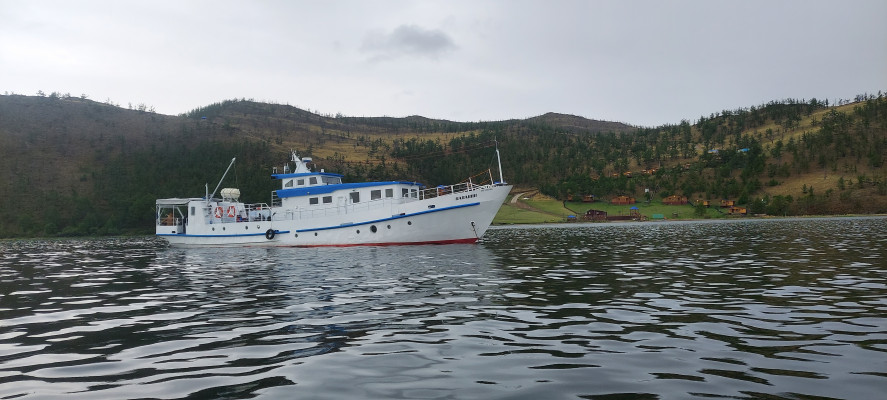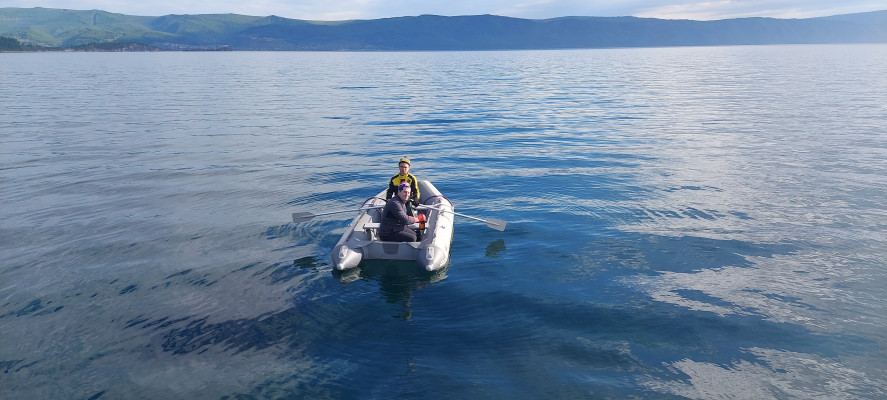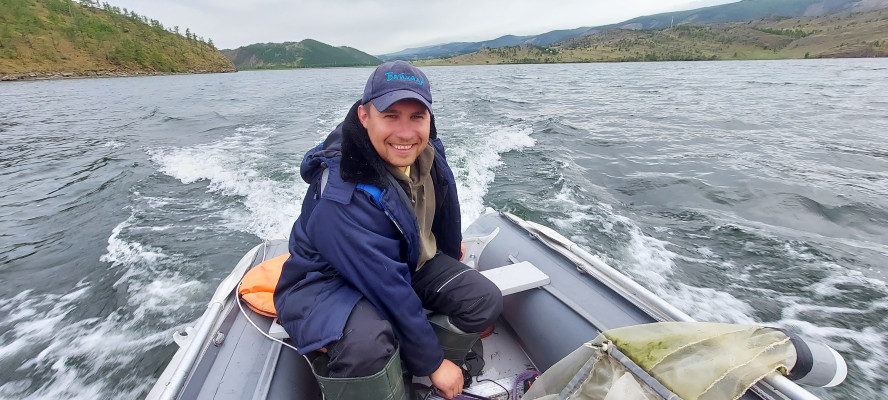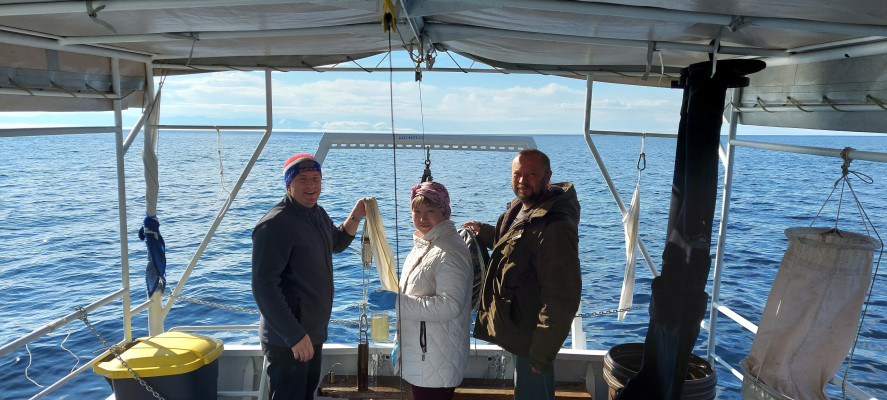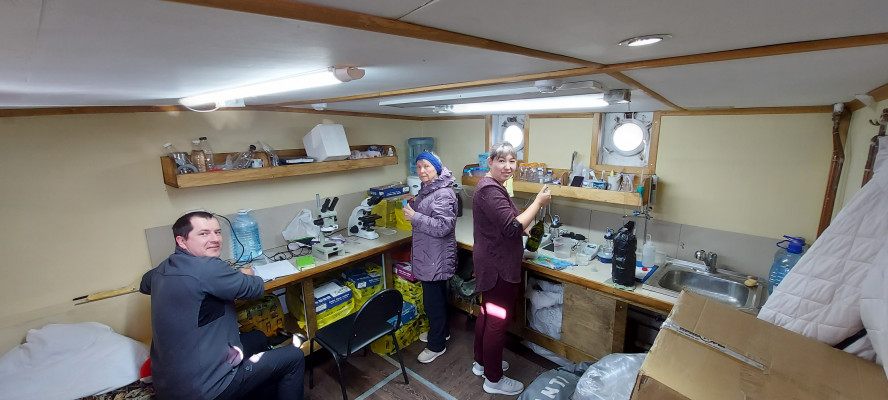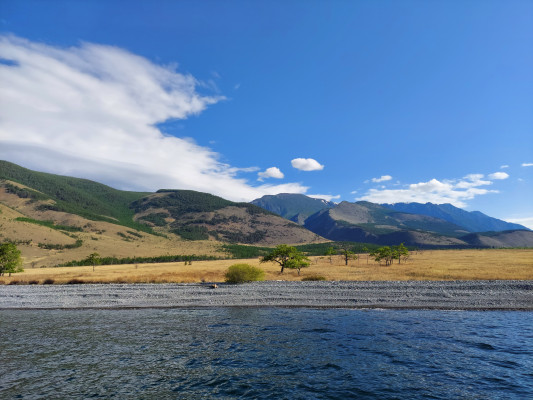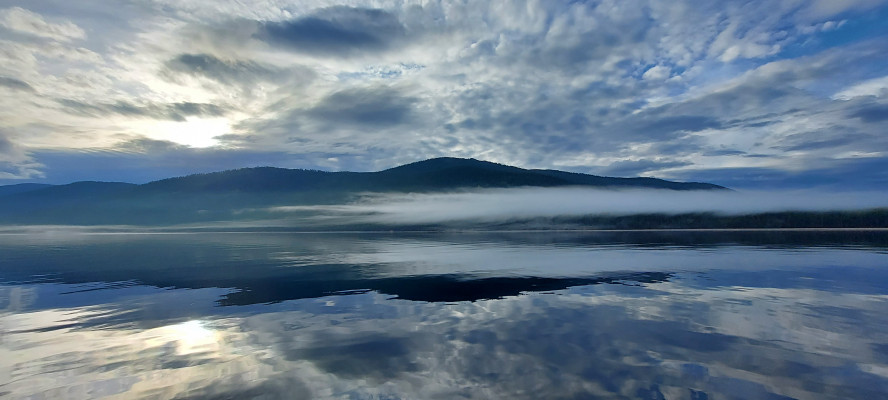Expedition on board the RV “Papanin” from May 30 to June 10, 2022 to study the ecosystem of the shallow water zone of Lake Baikal
The expedition was carried out within the programmes “Study of seasonal and long-term transformations of the state of water bodies and watercourses in East Siberia in the context of climate change, geological environment and anthropogenic loads” (project № 0279-2021-0005) ( LeaderA. Fedotov) and “Study of the impact of seasonal and long-term fluctuations in the level of Baikal on the biotic and abiotic compounds of the littoral zone of the lake and mixing zones of river and lake waters” (project № 0279-2021-0016) (Leader A. Fedotov).
The expedition aimed to study hydrochemical parameters of the shallow water zone, the distribution of phyto- and zooplankton and zoobenthos. The average sampling interval along the Baikal shore was every 30-50 km. Zooplankton samples were taken for analysis of food resource of omul larvae in their fattening areas. Besides, omul larvae were sampled to determine the microbiome of their intestine based on the molecular-genetic methods. Water samples were collected at 10 stations of the coastal zone of Lake Baikal including recreational coastal areas, uninhabited areas, river mouths, into which treated wastewater is discharged, bays and strait Maloe More. Water samples were analyzed comprehensively for organic micropollutants such as o-phthalic acid diesters (phthalates), polybrominated diphenyl ethers (antiprenes), alkyl ethers of p-benzoic acid (parabens).
The minimum-recorded surface water temperature was 3.2 °С, while in 2021, the water temperature was 1.7°С, and the maximum temperature was 15.4°С in Mukhor bay (Maloe More). There was no ice cover on the lake, although in 2021, some bays were blocked with ice floes in the northern part of the lake.
According to the preliminary data, among the plankton diatoms were the dominant genera Aulacoseira, Synedra, Stephanodiscus, and among the golden-backed diatoms was the dominant genus Dinobryon.




